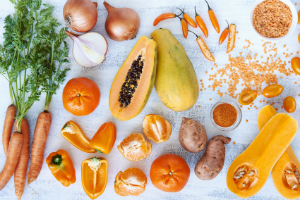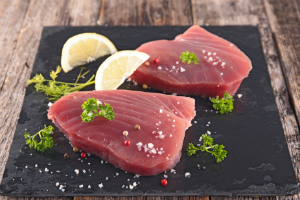What are antioxidants and why are they good for you?
- Overview
There are three terms we need to get to know to understand what an antioxidant is: antioxidant, oxidation and ‘free radical’.
‘Free radicals’ are very unstable atoms which are missing some electrons that would otherwise stabilise them. They are made when your body breaks down food or when you are exposed to tobacco smoke or radiation.
The reason free radicals are thought to be dangerous is because in order to try to stabilise, free radicals attack the nearest stable molecule, stealing its electron. When the attacked molecule loses its electron, it becomes a free radical itself, beginning a chain reaction. Once the process is started, it can cascade, finally resulting in the disruption of a living cell.
The buildup of free radicals over time is largely responsible for the aging process and it is thought that free radicals may play a role in cancer, heart disease, and conditions like arthritis.
So how can we combat free radicals?
The answer is antioxidants. An antioxidant is a substance that inhibits oxidation. Oxygen is, in fact, a free radical. When oxygen meets fat or pigments in food this is called oxidation. If fats oxidize, they produce stale or rancid odours and flavours. Picture an apple with a bite out of it. Soon enough the white of the apple starts to turn brown – this is the effect of oxidation. This process of oxidation can happen in the body too.
But antioxidant molecules are stable enough to ‘donate’ an electron to a free radical, stabilising them. This stops the chain reaction in its tracks, delaying and inhibiting damage to cells.
Your body produces some antioxidants, but others are found in some vitamins the body can’t produce. Ensuring you have a good balance of these vitamins in your food should provide you with additional antioxidant effects too.
Where can you find antioxidants?
Fruit and vegetables are the best source of antioxidants, which are carried in vitamins. A good rule of thumb is that the darker the skin and flesh of the fruit and veg, the higher the level of antioxidants. But it’s not just fruit and vegetables, dark chocolate and coffee are also a good source of antioxidants, as well as many other foods.
The best sources of antioxidant are:

Vitamin A has antiviral properties and is important for healthy mucus membranes which are our first line of defence in keeping out invading disease-causing pathogens in the nose, throat, mouth and lungs.
Sources are: Orange coloured vegetables and fruit such as papaya, butternut squash, carrots, sweet potatoes, tomatoes and green vegetables. Also found in eggs and liver.
Vitamin C helps to protect cells and keep them healthy. It is also necessary for the maintenance of healthy connective tissue, which gives support and structure for other tissue and organs.
Sources are: berries, broccoli, brussels sprouts, cauliflower, grapefruit, kale, kiwi, mango, nectarine, orange, papaya, sweet potato, strawberries, tomatoes, and red, green, or yellow peppers.
Vitamin E is a powerful antioxidant which works with vitamin C and selenium to protect body cells against free radical damage.
Sources are: avocados, almonds, sesame seeds, peanuts, walnuts, wheatgerm, sunflower seeds, cashew nuts, eggs, olive oil, tuna, potatoes, green leafy vegetables.
Manganese is a co-factor for an enzyme called manganese superoxide dismutase (MnSOD), which is a potent antioxidant associated with protection against free radical damage.
Sources are: quorn, green leafy vegetables, lentils, rye bread, brown rice, oatmeal, quinoa, buckwheat.

Selenium has a reputation for protecting the body against cancer and helps protect the body from the poisonous effects of heavy metals and other harmful substances.
Sources are: brazil nuts, tuna, beef, poultry, fortified breads, and other grain products.
Zinc is vital for immunity since it is required for the formation and activation of T cells and helps to fight viruses. T cell, also called T lymphocyte, a type of leukocyte (white blood cell) is an essential part of the immune system. T cells are one of two primary types of lymphocytes and B cells being the second type that determine the specificity of immune response to antigens (foreign substances) in the body.
Sources are: oysters, prawns, lobster, kidney, red meat, poultry, beans, nuts, seafood, whole grains, fortified cereals, pumpkin seeds, brown rice, and dairy products.
Last updated Tuesday 20 September 2022
First published on Monday 19 October 2015

